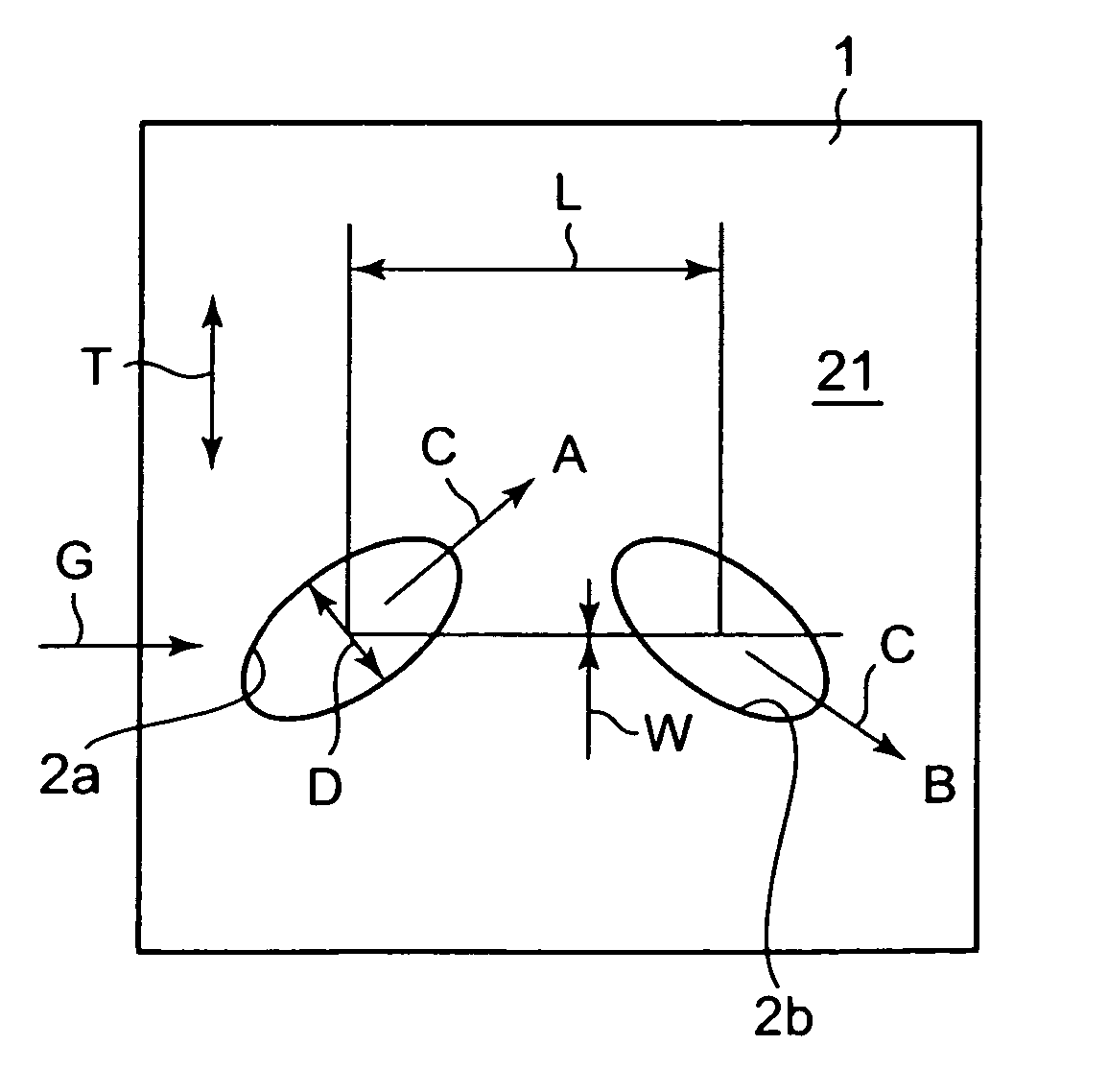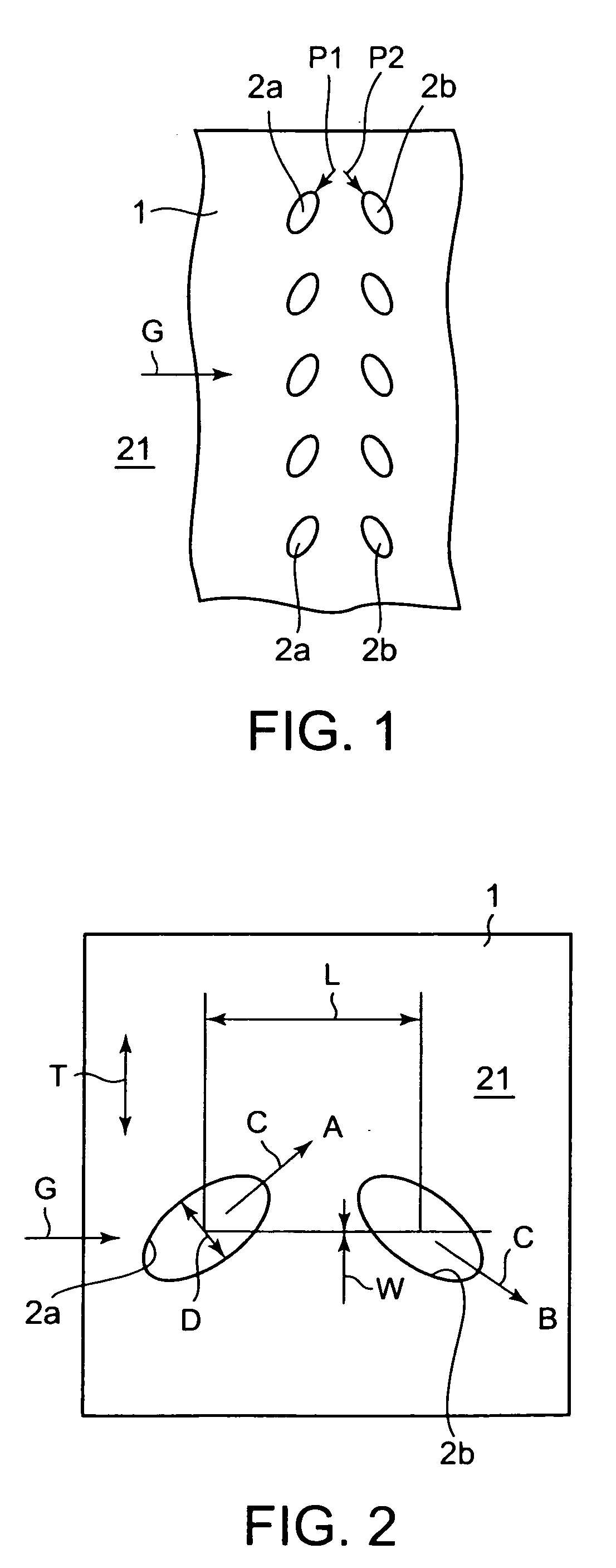Double jet film cooling structure
a cooling structure and film technology, applied in the direction of cooling/ventilation/heating modification, electrical equipment, machines/engines, etc., can solve the problem of low film efficiency and indicate the cooling and achieve the effect of effective cooling of the wall surface, suppressing the separation of cooling medium from the wall surface, and enhancing the film efficiency on the wall surfa
- Summary
- Abstract
- Description
- Claims
- Application Information
AI Technical Summary
Benefits of technology
Problems solved by technology
Method used
Image
Examples
second embodiment
[0027] Further, in the second embodiment shown in FIG. 3, the transverse interval W is equal to 1 D, and the longitudinal interval L is equal to 3 D.
third embodiment
[0028] Moreover in the third embodiment shown in FIG. 4, the transverse interval W is equal to 2 D, and the longitudinal interval L is equal to 3 D.
[0029] The cooling media C jetted from the respective paired jetting holes 2a and 2b shown in FIGS. 2 to 4 are mutually influenced and act so as to press the counterpart against the wall surface 1. The situation will be explained by referring to FIG. 5. FIG. 5 shows a section perpendicular to the flow direction of the high-temperature gas G. The two jetting holes 2a and 2b are adjacent to each other, and the jetting directions of the cooling media C from the two holes 2a and 2b are different from each other as viewed in the direction perpendicular to the wall surface 1. Therefore, a low-pressure portion 10 is generated between the two flows of the cooling media C. Thereby, on the inner sides of the cooling media C, i.e., in the portions opposite to each other, a flow toward the wall surface 1 is generated. By doing this, in the flows of ...
PUM
 Login to View More
Login to View More Abstract
Description
Claims
Application Information
 Login to View More
Login to View More - R&D
- Intellectual Property
- Life Sciences
- Materials
- Tech Scout
- Unparalleled Data Quality
- Higher Quality Content
- 60% Fewer Hallucinations
Browse by: Latest US Patents, China's latest patents, Technical Efficacy Thesaurus, Application Domain, Technology Topic, Popular Technical Reports.
© 2025 PatSnap. All rights reserved.Legal|Privacy policy|Modern Slavery Act Transparency Statement|Sitemap|About US| Contact US: help@patsnap.com



